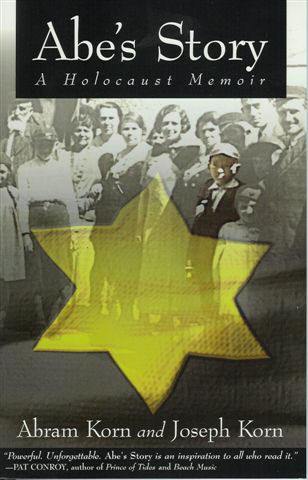The first part of this two-part essay focused on 5 survivors of the White Bus rescue organized and coordinated by Swedish Red Cross leader Count Folke Bernadotte which also led to another 15,000 prisoners being freed in the very last days of the war.
The mission’s logistics, staff and the lives of the 15,345 people it saved become real through the biography of five who lived to tell their stories.
Part 2 of this history explores other 'gifts' and people rescued by the White Buses. To understand the larger context of this rescue, we explore the controversial topic of Swedish ‘neutrality.'
This includes people who were often political figures and resistance fighters, a future leader of Norway, an activist in the International Ravensbrück Committee and others. We are indebted to their service and sacrifices and hope these biographies do them justice.

White Bus Convoy Enroute to Freedom
Controversy about Swedish ‘Neutrality’
"We couldn't believe it."
This is what Nelly Langholm (see Gift 3 in Part 1) exclaimed as she began to understand that she was being bused to Sweden and freedom in 1945.
"We had to walk to the gates. We saw the buses and there were these Swedish men in grey uniforms with red crosses on their arms. I think they told us. 'Now you will go to Sweden. Now you will be free. Can you imagine?'"[i]
Wasn’t it remarkable that the neutral nation of Sweden had arranged this rescue directly with Heinrich Himmler, the architect and general in charge of the Nazi concentration and death camps?
Alternatively, was Sweden really a ‘neutral’ nation during the Second World War?
If so, how did it maintain this posture considering pressures from both sides in the conflict to join, support and/or endorse their cause?
Evidence and historical analysis show that Sweden’s high-wire act of trying to maintain a balance resulted in some morally dubious decisions and actions.
The Swedish government and population were rightly concerned about German aggression, especially after the invasions of its neighbors, Poland, Denmark and Norway.
Fearing the Soviets more than the Nazis, Finland’s decision to join with the Germans in 1941 created even more tension.

As part of the rescue convoys, one of the “White” Buses, DSB 215,
now painted red after the war, is on display in Odense at the Danish Railway Museum in Denmark.
The equation to achieve a neutral balance included, on one side, allowing safe passage and safe harbor for Danish Jews, the heroism of Raoul Wallenberg who found ingenious ways to save over 20,000 Jews from Nazi atrocities, and turning a blind eye toward the 44,000 Norwegians who found refuge in this country.
Swedes permitted Nazi freight trains safe passage through northern Sweden. In terms of trade, Sweden took a more aggressive pro-Nazi posture:
“The Swedish economy was, for a number of years, almost fully integrated into the Nazis' New Order; the country supplied Germany with high-grade iron ore (30 percent of that used by the German armaments industry), as well as ball bearings, foodstuffs, wood, and many other raw materials.”[ii] 
The importance of ball bearings cannot be understated; they provide the reduced friction needed to keep motors, armaments, vehicles, and other equipment on the move.
While Sweden did sell ball bearings to both the Nazis and the British, they nonetheless were aiding the Axis powers.[iii]
Allowing German banks and corporations to extend their credit lines resulted in “the delivery of vast quantities of military equipment to the Wehrmacht.”
There is further documentation that 13 tons of gold looted from Jews and others was stashed in Swedish banks.
In addition, some assert that King Gustav V was at least partial to the German and Nazi cause:
“Of particular importance to the German war effort, deliveries of Swedish iron ore were to continue unhindered, with the mines protected against Allied sabotage attempts.”[iv]
Why would Sweden allow this?
One view is that it was necessary to preserve whatever could be salvaged for neutrality from a vastly superior army and nation bend on destruction of its enemies. This is indeed an understandable perspective.
However, “there is no doubt that for several years Sweden put its considerable economic resources at the disposal of the Reich; but its behavior in the latter stages of the war removed much of the stigma of collaboration.”[v]
Much, but never all; maybe understand and forgive but never forget.
Additional support for this view comes from Economics Teaching Fellow at the University of Surrey Eric Golson:
“In order to maintain their independence in WWII, neutrals had to make up for their relative military weakness by offering economic concessions to the belligerents. … For small states in a world at war, however, the defense of neutrality was complex; survival was everything.” [vi]
Acknowledging this history through the lens of time, more than 55 years after the end of World War Two, Swedish Prime Minister Goran Persson publicly stated that the “moral and political responsibility for what Swedish officials did – or failed to do – during the war years is something we will always be forced to carry with us.”[vii]
Pretending to adhere to a policy of ‘non-belligerency” does not mean that Sweden’s actions did not have consequences; they did.
Just ask Nelly Langholm who endured hell of the Final Solution under Nazi regime and the joy of finding life after a White Bus ride to “neutral” Sweden.
Against this background of Sweden’s foreign policy, the war continued, atrocities occurred, and people were demonstrating humanitarian values.
The following 6 gifts define these actions which put others before self.

White Buses Convoy Enroute to Freedom
[i] https://www.newsweek.com/swedish-schindler-how-count-bernadotte-saved-thousands-jews-death-327234
[ii] Petropoulos, Jonathan (1997). Co-Opting Nazi Germany: Neutrality in Europe During World War II. ADL News: Antisemitism Globally. January 1, 1997. This article originally appeared in Dimensions, Vol 11, No 1.
https://www.adl.org/news/op-ed/neutrality-in-europe-world-war-ii[iii] Golson, E (2012), “Did Swedish ball-bearings keep the Second World War going? Re-evaluating neutral Sweden’s role,” Scandinavian Economic History Review 60(2): 165–182.
[iv] https://royaltyrobertwriter.home.blog/2020/06/15/king-gustav-v-of-sweden-nazi-sympathiser
[v] (Petropoulos, op. cit.)
[vi] Golson, Eric (2019). The economics of neutrality in World War II, VoxEu. November11, 2019. https://voxeu.org/article/economics-neutrality-world-war-ii
[vii] Wiklund, Mats (2000). Murky truth of how a neutral Sweden covered up its collaboration with Nazis. The Independent. January 27, 2000.
https://www.independent.co.uk/news/world/europe/murky-truth-how-neutral-sweden-covered-its-collaboration-nazis-5372299.html




